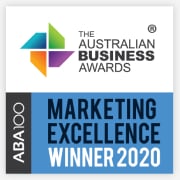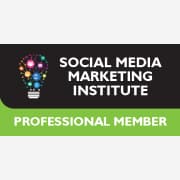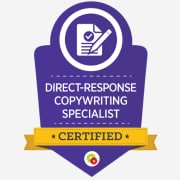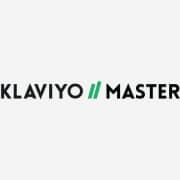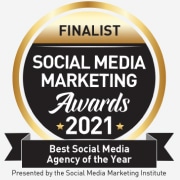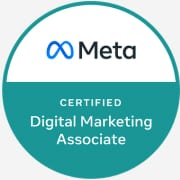Optimise Your Sales Process
It can be tempting to prioritise the exciting parts of building your business, such as coming up with new marketing ideas and creating ads, but one crucial and often underestimated part of growing a business is the sales process. In this blog post, I’ll cover the fundamentals you need to ensure you’re moving people effectively through your marketing into sales.
The Importance of a Streamlined Sales Process
Whether you sell products online or deliver services offline, your sales process is what turns your marketing efforts into revenue.
For eCommerce businesses that my team and I work with, our service includes a website CRO (conversion rate optimisation) live audit.
We know how much of an impact the websites ability to convert will have on our performance, so I’ll jump online with one of our CRO partners for up to an hour and review:
- Historical data analysis through Google Analytics, Shopify etc.
- Copywriting and USPs
- Images/photos/videos/design
- Plugins
- Load Speed
- Social proof (testimonials etc)
- Functionality, such as the Search Bar and filtering options
- Information hierarchy
- Competitors
- Checkout process
- CTA Buttons
- Email marketing automation, including abandoned cart emails
It’s a very top-level review, but we always come out with some practical advice that our clients can either implement themselves or have an expert implement for them.
For our services-based clients, many of the above still apply, and in addition, I’ll always dive into what happens after we generate the lead, because, like the website checkout process for eCom businesses, the sales process here will have a huge impact on my team’s performance.
A streamlined online sales process eliminates friction and uncertainty, which will increase your conversion rate and put the marketing time and budget you’re investing to much better use. As one leading sales conversion web design Sydney company puts it, “a truly streamlined sales process ultimately focuses on improving the overall company bottom line. Don’t focus on just visual aesthetics, after all, as they say, likes is vanity, sales is sanity.”
Optimising Your 24/7 Sales Employee
From the moment someone hits your website, the sale process begins.
Your potential customer is learning about a solution to their problem and trying to understand if you’re the best person to deliver it.
Your website is your 24/7 #1 sales employee and its primary role is to convert all of your marketing into a sale or enquiry.
How much would you pay someone with such a crucial role in your business?
How would you manage their performance?
How would you train and support them?
If you’ve been neglecting your website, here are some of my top tips to improve your website conversion rate.
- Check Your Speed
Neil Patel created a great infographic that explains:
- 79% of shoppers who are dissatisfied with website performance are less likely to buy from the site again
- 40% leave a website if it takes more than 3 seconds to load
- 47% of consumers expect a website to load in 2 seconds or less.
Not sure how fast (or slow) your website loads?
Use Pingdom’s speed test tool and Google’s speed test tool to see how yours stacks up.
When you know where you stand, spend the time conducting research into how you can optimise your website speed, or get in touch with a website agency. It will be worth it.
- Copywriting and USPs
Having worked with CRO agencies now for a couple of years, I know that website copywriting is one of the most underestimated components of getting a website to convert.
Just because you understand your products or services better than anyone else, it does not mean you can write about them better than anyone else. After all, you are not the one that’s going to be buying your products, and you’re probably too close to write about them from the fresh perspective a potential customer needs.
A good copywriter understands consumer behaviour, marketing principles, conducts research, will write about your products better than you can and will help you stand out from your competitors.
You can also use this copywriting in your paid ads, emails and print.
It’s a worthy investment and adds so much value to your marketing.
If you don’t have the budget to invest in a professional copywriter, at least do a competitor analysis and see how your competitors (and those leading your industry around the world) talk about their products/services on each page of their website, and how they convey their unique selling points and strong features.
While you’re at it, also review the percentage of your website copy that talks about you and your features, versus your customer and the benefits and emotional outcomes your solution will deliver for them. The spotlight should shine brightly on your customer, not you.
- Social Proof
Social proof can include testimonials, partner logos, client logos, awards, case studies, reviews, trust (as seen in) icons etc.
It’s based on the idea of normative social influence, where a person conforms in order to be accepted and belong to a group. It also reduces risk by demonstrating others are already satisfied with what your solution promises to deliver.
91% of shoppers read reviews before making a purchase and they can increase conversion rates by 34%.
Embedding plenty of social proof on each page of your website is a very smart move as it won’t take you long and will have an immediate impact.
- Images, Photos and Videos
Gone are the days where you can get away with using all stock (purchased) photography on your website.
Seriously.
If you have a service-based company and you have photos of complete strangers shaking hands or sitting around a table, you need to consider this as a top priority.
Not only do most people know this isn’t actually you and your team, but they also might start wondering “what do they have to hide”, or similar thoughts that breed distrust.
Hire a photographer, plan a shot list based on the content you need to support, and you will capitalise on a great opportunity to lower buyer’s resistance by building a relationship with your website visitors.
Think about it… If your website is your 24/7 sales employee, do you really expect them to collect people’s contact details without showing their face?
Would you send a sales employee to a networking event wearing a balaclava?
Hmm.. perhaps I went a bit far there… but you get the point.
If you have an eCommerce store, it’s important to think outside of just product photos… Take a team photo to show you’re real people, take photos of the raw ingredients or materials so you can support your USPs or strong features with proof, and don’t be afraid to ask for (and incentivise) user-generated content (UGC) for your website.
Email Marketing and Automation that will Increase Your Sales
Run an eCom Business?
Email marketing can be a significant contributor to your bottom line. This is because you own the email addresses and you don’t have to pay to reach them (other than the email software subscription fees of course).
Also, you’re reaching people who have subscribed, submitted their email when checking out, or purchased from you in the past, so their intent to purchase (or purchase again) is much higher than someone in a cold audience seeing one of your ads.
As a certified Klaviyo consultant working with five Klaviyo accounts, I see first-hand how email marketing and automation can boost revenue.
Check this out:
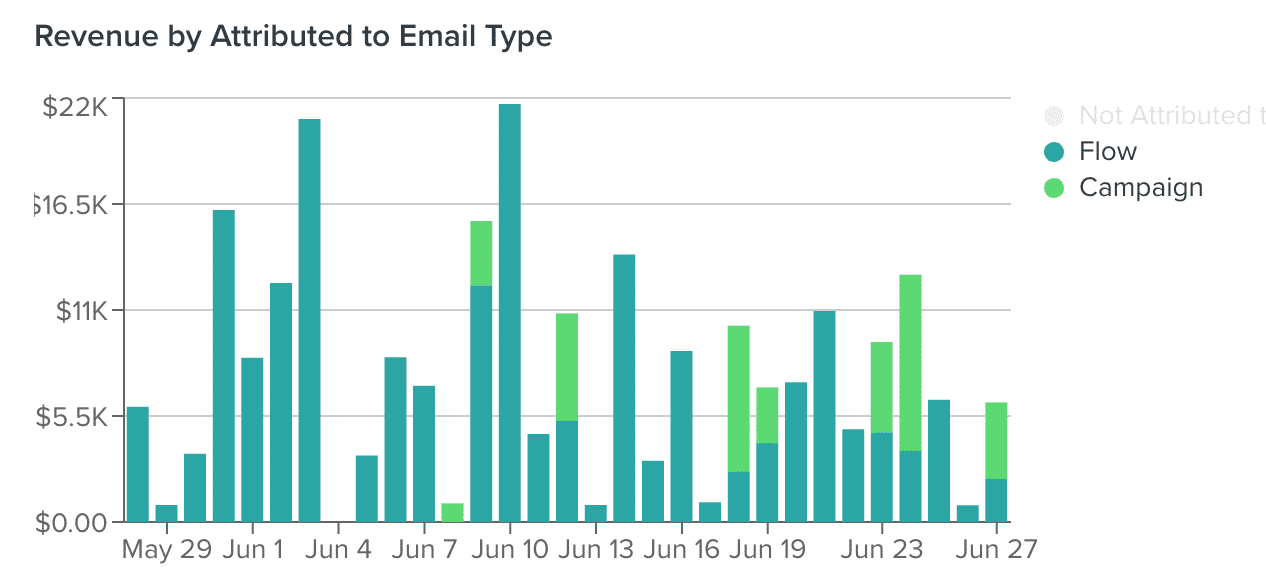
That’s $244,760 I’ve generated for one of our client accounts via Klaviyo over the last 30 days.
Flows you should consider in your email automation:
- Welcome series
- Thank you (1st purchase + repeat customer)
- Browse abandonment (ensure you’re split-testing)
- Cart abandonment (ensure you’re split-testing)
- Customer win-back
Content topics you can consider sending in regular emails campaigns / EDMs include:
- Educational, e.g. “How to use ___”, “Did you know___”, and FAQs
- Before and afters / testimonials
- Sales / promotions
- Site-wide
- Product category-specific
- Buy x, get y
- Free shipping
- Product launches / updates
- etc
Run a Service-Based Business?
Your email marketing and automation should go beyond a monthly e-newsletter if you’d like to make the most of your website traffic, subscribers, and clients.
We’ve using ActiveCampaign for years and are Certified Partners; I’ve seen the positive impact of email campaigns and automations first-hand for my agency and for our clients.
The automations you should consider include:
- Website Engagement, e.g. When a prospect visits your service pages or contact page but doesn’t enquire, automate an email suggesting they book a time to run through any questions.
- Downloadable resource delivery and email nurture, e.g. When someone downloads a resource from your website, you can deliver them the resource and follow with a series of educational emails that demonstrate your knowledge and how your solutions could solve their problems.
- Webinar email series, e.g. After someone downloads a resource, also send them a series of emails about your upcoming webinar, including the topics that will be covered and a count-down until it’s live.
- Website form tagging and deal creation, e.g. When someone submits a form on your website, automate an email that greets them and suggests they book straight into your calendar through a tool like Calendly. Also, include a step that adds them as a ‘deal’ (prospect) in your sales pipeline, with a task for you to follow up.
- Engagement scoring, e.g. When a subscriber in your database reaches, for example, 10 points, by visiting your website between 2 and 5 times (5 points), opens 3 emails (1 point per open = 3 points) and clicks on a link in your email (2 points), trigger an email that includes a case-study and an offer.
The content you should consider in your regular campaigns includes:
- Case studies / testimonials / before and afters / recent results
- Educational tips and resources
- What’s new with your team / behind the scenes
- Service highlights
- etc
Know Your Sales Metrics
If you’d like to know what social media metrics you should be monitoring, check out my blog post here.
In this blog post, I’ll tell you the key metrics you need to be monitoring for your website and sales process.
eCommerce Sales Metrics
- Email Open Rate
- Email Click Through Rate (CTR)
- Add-to-Cart Rate
- Shopping Cart Abandonment Rate
- Cost per Acquisition (CPA)
- Average Order Value (AOV)
- Customer Retention Rate
- Repeat Customer Rate
- Customer Lifetime Value (CLV)
For a more comprehensive list that also includes accounting-related metrics, check out this article by Shopify.
Services-based Sales Metrics
Here are some quick stats that will hopefully motivate you to take a closer look at your sales process:
- Invespcro.com says
- 80% of sales require 5 follow up calls. How many are you doing?
- Contact within an hour of receiving a lead = 60 x more likely to qualify the lead compared to 24 hours or longer. How fast is your response time?
- 75% of online buyers want to receive between 2-4 phone calls before a company gives up. When do you give up?
- Calling a lead within 5 hours is 40% more effective than calling after 24 hours. Are you guilty of waiting until the next day?
Your sales process should consider:
- What marketing channel and campaign your leads are coming from, so you can understand the quality of lead from each channel
- How you open up the initial conversation with an enquiry
- What questions you will ask to diagnose their problem, so you can prescribe a solution
- How you qualify them, e.g. Budget, Authority, Need, Timing (BANT)
- How you will separate yourself from the competition during initial the call/meeting
- How you will overcome objections before they occur
- How you will present your solution to be concise, emotive, and outcome-focussed
- How you will transition into getting them started
Metrics include:
- Connect Rate = 1 / the number of contacts attempted x 100
- Marketing Qualified Lead (MQL) Conversion Rate = MQLs / leads x 100>
- MQL to Sales Qualified Lead (SQL) Conversion Rate = SQL / MQLs x 100
- SQL Conversion Rate = sales / SQLs x 100
- Lead to Sale Conversion Rate = sales / leads x 100
- Sales Cycle Length = time from lead to sale
Show Me the Money Metrics!
As the saying goes, you can’t manage what you can’t measure.
If you aren’t measuring the effectiveness of your sales process, it will never be optimised to its true potential.
I hope you’re going to take a serious look at your sales process.
If you need a hand and would like to know more about how my team and I can help to optimise your sales process and manage your social media advertising, simply click here to book a quick 15-minute chat.
